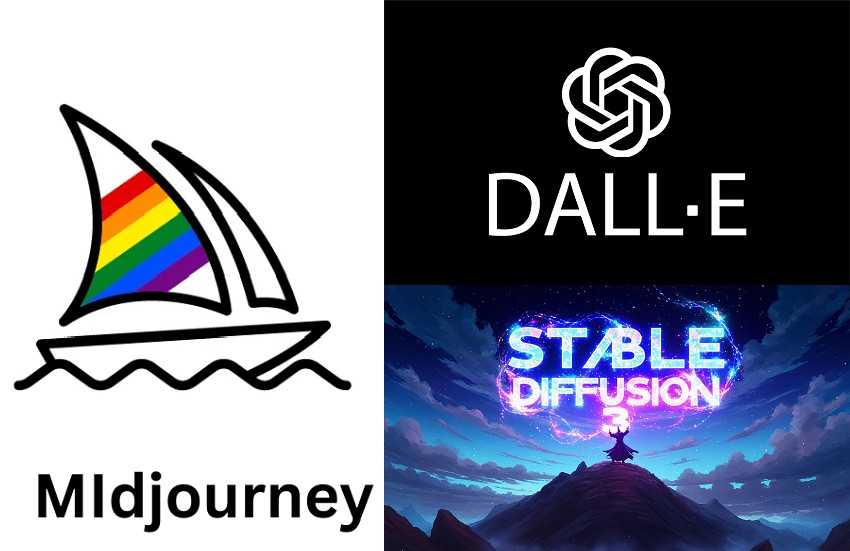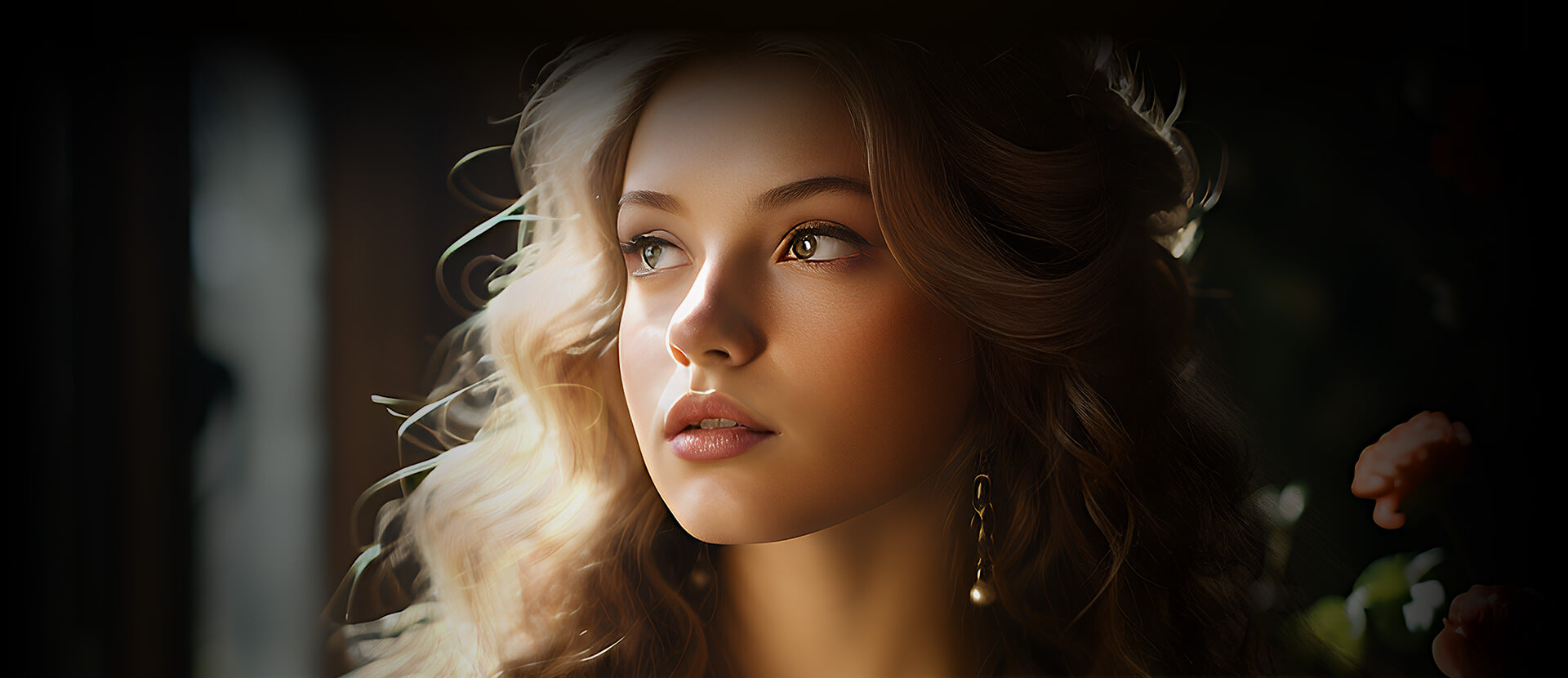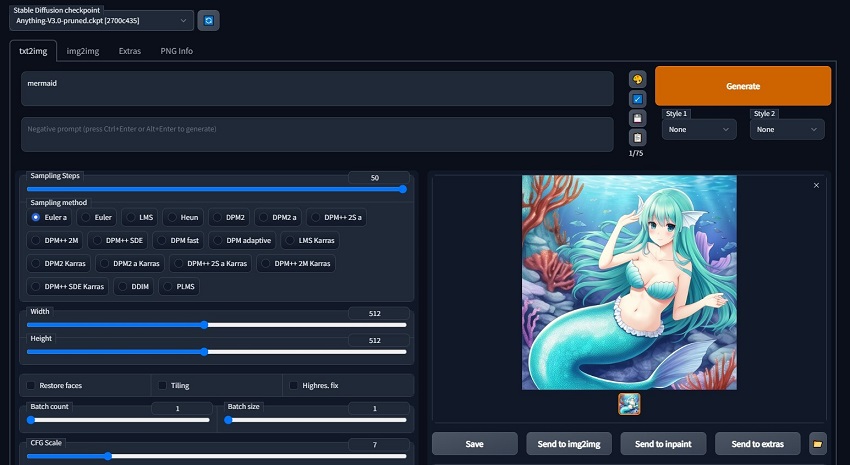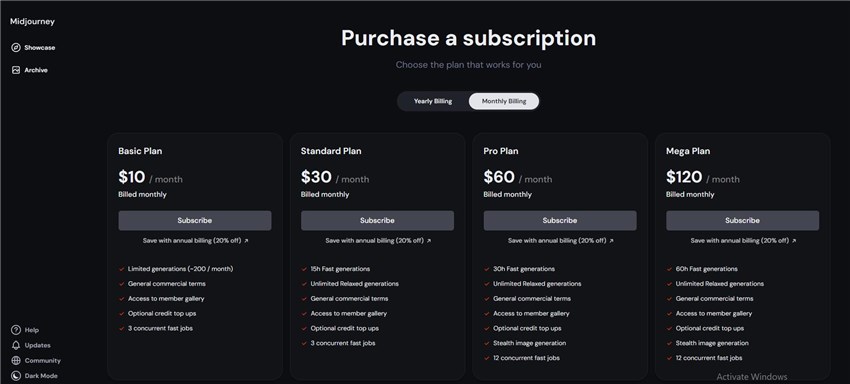Midjourney vs. Stable Diffusion vs. DALL·E: A Comprehensive Comparison Guide
Updated on
At the forefront of the AI-powered image generation are three powerhouses: Midjourney, Stable Diffusion, and DALL-E. These three cutting-edge tools have transformed the way we conceptualize and create visual content, offering artists, designers, and businesses unprecedented capabilities to bring their ideas to life.
But with great power comes great... confusion. Which of these AI marvels is right for your specific needs? How do they stack up against each other in terms of image quality, ease of use, and cost-effectiveness? Whether you're a digital artist looking to expand your toolkit, a marketer seeking to create eye-catching visuals, or simply a curious tech enthusiast, understanding the strengths and weaknesses of each platform is crucial.
In this comprehensive comparison, we'll dive deep into the world of Midjourney, Stable Diffusion, and DALL-E. We'll explore their unique features, analyze their output quality, discuss their user-friendliness, and examine their pricing models. By the end of this post, you'll have a clear picture of which AI image generator aligns best with your creative vision and practical requirements.
So, let's embark on this artistic journey through the realm of AI-generated imagery and uncover the magic behind these revolutionary tools!

Midjourney vs. Stable Diffusion vs. DALL·E: Image Quality
When it comes to AI-generated images, quality is paramount, and each of our contenders brings something unique to the table. Midjourney, often hailed as the artistic powerhouse, has made significant strides with its latest V7 version. It's renowned for producing images that are not just high-quality, but often breathtakingly beautiful. Whether you're aiming for hyper-realistic photographs or painterly masterpieces, Midjourney delivers with rich, vivid details that can make viewers question whether they're looking at AI-generated art or the work of a human master.
The platform excels at creating images with a unified look and feel, perfect for maintaining a consistent visual style across a project or brand. However, it's not without its limitations. When faced with intricate prompts involving multiple subjects, Midjourney sometimes struggles, occasionally blending or duplicating elements in unexpected ways. This quirk can lead to surreal, albeit unintended, results.
DALL-E 3, developed by OpenAI, shines in its ability to interpret and execute detailed textual descriptions. It's particularly adept at generating images that closely match complex text prompts, making it ideal for specific, detailed requests. One of DALL-E 3's strengths lies in its scene coherence; it excels at creating cohesive scenes with well-integrated foreground and background elements. While capable of producing realistic images, DALL-E 3's output often has a slightly cartoonish or airbrushed quality compared to Midjourney. This characteristic can be either a drawback or an advantage, depending on the desired aesthetic.
Stable Diffusion offers a unique approach to image generation, using a diffusion process that refines random noise over multiple steps. This method allows it to produce a wide range of high-quality images with diverse styles and content. One of Stable Diffusion's standout features is the level of control it offers users. It allows for the specification of intricate details like poses or fabric textures, providing a high degree of customization over the final image.
Moreover, Stable Diffusion has shown particular prowess in handling text within images, a task that can be challenging for other AI models. Like DALL-E 3, it handles complex prompts well, allowing for nuanced and specific image requests. This flexibility makes it a versatile tool for a wide range of applications.
However, there is a common challenge for Midjourney, Stable Diffusion, and DALL·E 3, which is achieving high-quality, high-resolution images directly from the generation process. Often, the initial outputs can suffer from noise, lack of sharpness, and lower resolution, which can detract from the overall impact of your artwork.
Aiarty Image Enhancer addresses these pain points by leveraging advanced AI technology to upscale, denoise, and sharpen your images. This software brings out the finest details, enhances textures, and ensures your artwork looks polished and professional. Whether you're looking to refine intricate designs or simply add a professional touch to your images, Aiarty Image Enhancer provides the tools you need for stunning results. Transform your creations effortlessly and see the difference that professional-grade image enhancement can make.


Midjourney vs. Stable Diffusion vs. DALL·E: Features
The landscape of AI image generation is rich with diverse features, each platform offering a unique set of tools and capabilities that cater to different needs and workflows.
Midjourney stands out with its highly interactive and iterative approach. Accessible through Discord, it fosters a community-driven experience where users can collaborate and refine their creations in real-time. This integration allows for a dynamic creative process, where adjustments and modifications can be made on the fly.

One of Midjourney's standout features is the 'cref' tag, which enables users to maintain consistent character appearances across multiple images. This is particularly valuable for storytelling or maintaining brand consistency.
Additionally, Midjourney extends its functionality to editing existing images, offering a level of flexibility that mirrors the process of generating new ones.
DALL-E 3, on the other hand, focuses on intuitive use and seamless integration. Its full integration with ChatGPT allows for a conversational approach to image generation that feels natural and user-friendly. This integration makes it particularly accessible to those who might be intimidated by more complex interfaces.
DALL-E 3 also shines in its ability to generate images in various artistic styles using image references, expanding the creative possibilities for users. Its credit-based system offers flexibility in usage and billing, allowing users to pay for what they use without committing to a subscription. Perhaps most impressively, DALL-E 3 excels in interpreting and executing complex, nuanced text prompts with high accuracy, making it a powerful tool for translating detailed ideas into visual form.
Stable Diffusion sets itself apart with its extensive customization options and open-source nature. This platform can be run locally, giving users complete control over the generation process and allowing for extensive modifications.

Advanced users and developers find particular value in Stable Diffusion's fine-tuning options, which allow the model to be adapted for specific use cases or styles. Features like inpainting and outpainting push the boundaries of creativity, allowing users to fill in missing parts of an image or expand it beyond its original borders. The platform's developer-friendly approach is evident in its subscription plans, which are tailored for various needs, including options for unlimited image generation.
Midjourney vs. Stable Diffusion vs. DALL·E: Ease of Use
The accessibility and user-friendliness of AI image generation tools play a crucial role in their adoption and effectiveness. Each of our contenders - Midjourney, DALL-E 3, and Stable Diffusion - approaches user experience in distinct ways, catering to different levels of technical expertise and user preferences.
Midjourney takes a unique approach by operating through Discord, a platform primarily known for gaming communities. This integration creates an interesting dynamic for users. Initially, the Discord-based interface can be somewhat confusing, especially for those unfamiliar with the platform.
However, once users overcome the initial learning curve, they often find the system quite intuitive and engaging. The community aspect of Discord adds a collaborative dimension to the creative process, allowing users to share and discuss their creations in real-time. Midjourney's subscription model, with various plans available, means that users need to commit to a paid service to access its full capabilities. This model can be seen as a barrier for casual users but ensures a certain level of dedication from its user base.
DALL-E 3 stands out for its seamless integration with ChatGPT, offering perhaps the most user-friendly experience of the three. This integration allows users to generate images through natural language conversations, making the process feel intuitive and accessible even to those with no prior experience in AI image generation. The conversational interface removes many of the technical barriers typically associated with such tools, allowing users to focus on their creative ideas rather than grappling with complex prompts or settings.
DALL-E 3's credit-based system adds to its ease of use by providing flexibility in terms of cost. Users can purchase credits as needed, without the commitment of a monthly subscription, making it an attractive option for occasional users or those testing the waters of AI image generation.
Stable Diffusion, while powerful and versatile, presents the steepest learning curve of the three. Its open-source nature and extensive customization options make it a favorite among developers and tech-savvy users, but can be daunting for beginners. The ability to run Stable Diffusion locally provides unparalleled control and privacy, but it also requires more technical knowledge to set up and operate effectively.
For those willing to invest the time to learn its intricacies, Stable Diffusion offers the most room for experimentation and fine-tuning. The platform does offer user-friendly interfaces through various third-party implementations, which can help bridge the gap for less technical users.
Midjourney vs. Stable Diffusion vs. DALL·E: Cost
When considering AI image generation tools, cost is also a crucial factor that can significantly impact user choice and usage patterns. Midjourney, DALL-E 3, and Stable Diffusion each approach pricing differently, reflecting their unique features and target audiences.
Midjourney operates on a subscription-based model, requiring users to commit to a paid plan to access its full capabilities. The basic plan starts at $10 per month, which provides users with approximately 200 image generations. This pricing structure is designed to cater to regular users who require a consistent output of high-quality images. For professionals in fields like digital art, marketing, or design, this subscription model can be seen as an investment in a powerful creative tool. However, for casual users or those looking to experiment without commitment, the mandatory subscription might be a deterrent.

DALL-E 3 takes a different approach with its credit-based system. This flexible model allows users to purchase credits as needed, without the obligation of a monthly fee. Such a system is particularly appealing to small and medium-sized businesses, as well as individual users who may have fluctuating needs for AI-generated images. The pay-as-you-go nature of DALL-E 3's pricing makes it cost-effective for those who don't require constant access to the service. It also allows users to scale their usage up or down based on project demands, providing a level of financial flexibility that subscription models can't match.
Stable Diffusion stands out in the pricing landscape due to its open-source nature. At its core, Stable Diffusion is free to use, which is a significant advantage for developers, researchers, and hobbyists who have the technical know-how to run the model locally. This free access opens up a world of possibilities for experimentation and customization without financial constraints. However, for those seeking a more user-friendly experience or additional features, Stable Diffusion offers optional subscription plans. The basic plan starts at $9 per month, with higher tiers available for more extensive use. These paid plans typically offer benefits like faster generation times, cloud-based processing, and access to more advanced features.
Midjourney vs. Stable Diffusion vs. DALL·E: Specific Use Cases
The versatility of AI image generation tools has led to their adoption across various industries and creative fields. Midjourney, DALL-E 3, and Stable Diffusion each excel in different scenarios, making them suitable for specific use cases that align with their unique strengths.
Midjourney has found a strong foothold among marketers and content creators who require high-quality, visually striking images for web pages, social media, and articles. Its ability to produce artistic and photorealistic images with ease makes it an invaluable tool for creating eye-catching visuals that can elevate brand storytelling and engage audiences.
The platform's strength in generating consistent, aesthetically pleasing imagery is particularly beneficial for maintaining a cohesive visual identity across marketing campaigns. Additionally, Midjourney's community-driven approach through Discord makes it an excellent choice for collaborative projects, where real-time feedback and iterative design are crucial.
DALL-E 3 shines in scenarios that require the generation of imaginative and intricate images from detailed textual descriptions. This makes it particularly well-suited for creative projects that demand a high degree of specificity and nuance. Writers, game designers, and storyboard artists find DALL-E 3 especially useful for visualizing complex scenes or concepts directly from their written descriptions.
The platform's integration with ChatGPT also makes it an excellent tool for brainstorming and conceptual development, where ideas can be rapidly visualized and refined through conversation. Small businesses and startups often gravitate towards DALL-E 3 due to its flexible pricing model, which allows for cost-effective experimentation and scaling of visual content creation.
Stable Diffusion caters to a more technically inclined audience, making it the go-to choice for developers and enterprises that require extensive customization and control over the image generation process. Its open-source nature and ability to be run locally make it ideal for projects with specific privacy requirements or those needing integration into existing software pipelines.
Research institutions and AI labs often prefer Stable Diffusion for its flexibility in fine-tuning and experimentation. The platform's advanced features like inpainting and outpainting are particularly valuable in fields such as digital art restoration or creating expansive, detailed landscapes for gaming and virtual reality applications.
So, all three platforms have found applications, but each with a different focus. Midjourney's artistic flair makes it suitable for conceptual product visualizations that need to capture attention and evoke emotion.
DALL-E 3's precise interpretation of detailed prompts is useful for quickly generating multiple design iterations based on specific criteria. Stable Diffusion's customizability allows for fine-grained control over product details and textures, making it valuable in later stages of the design process.
For educational purposes, DALL-E 3's intuitive interface and conversational approach make it accessible for students and educators looking to incorporate AI-generated imagery into their learning materials. Midjourney's community aspect can be leveraged in collaborative educational projects, fostering creativity and discussion. Stable Diffusion, with its open-source nature, provides an excellent platform for teaching AI concepts and encouraging hands-on experimentation in more advanced technical courses.
Conclusion
As we've explored the intricacies of Midjourney, DALL-E 3, and Stable Diffusion, it's clear that the world of AI image generation is rich with possibilities. Each of these powerful tools brings its own unique strengths to the table, catering to different needs, skill levels, and creative visions.
So, which AI brush will you choose for your next masterpiece? The canvas of possibilities awaits, and the power to create is at your fingertips.